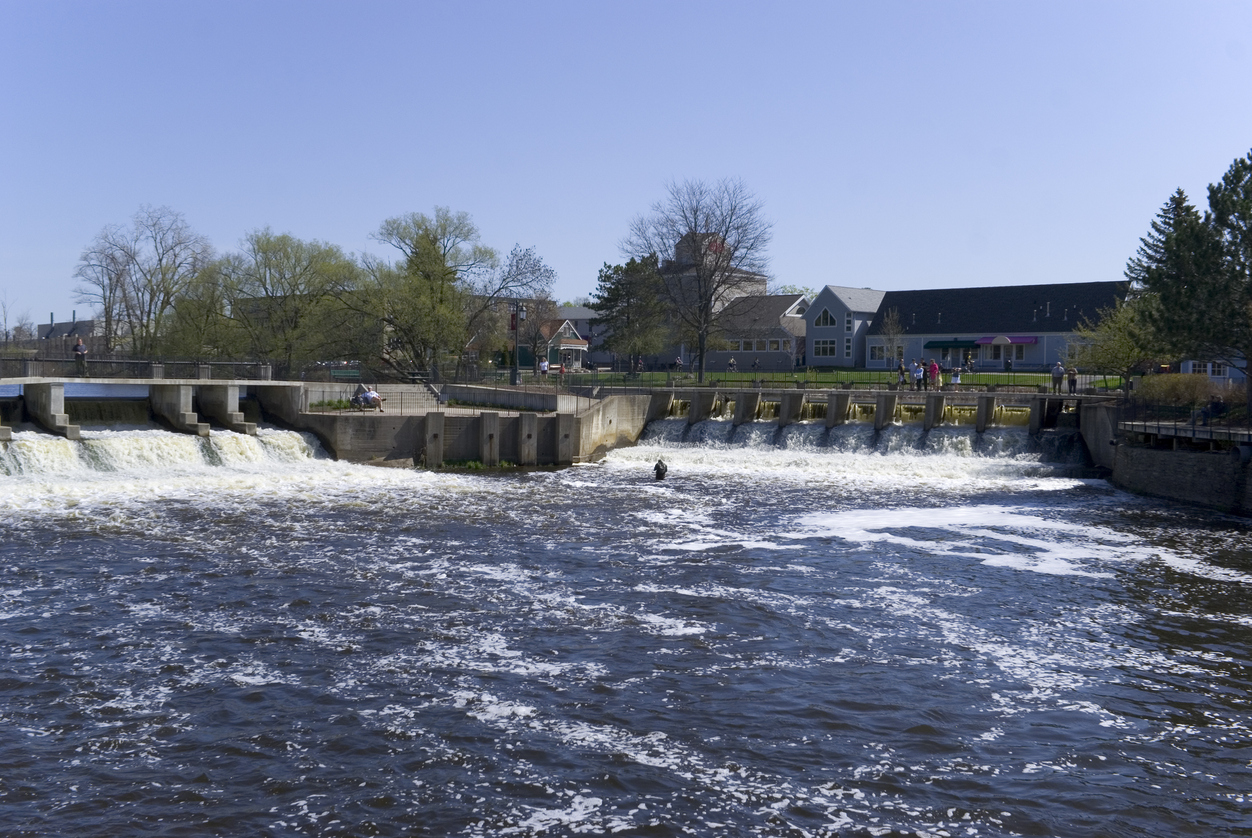Unusually heavy spring rains were the first hint of the impending disaster last week, pouring into local lakes until the century-old Edenville Dam could take no more. As it gave way, water levels dropped precipitously, as if somebody had pulled the plug. The torrents rampaged on, damaging a second dam and forcing 11,000 residents to flee from the Midland area. Many have returned, left to gaze with incredulity on their new surroundings.
"That was my dream, and we worked so hard and we got our first actual home and it's on a lake," said Barbie Gaudard, surveying the family's backyard where a moldering carp was protruding from the sand. Having grown up in the area, the Gaudards were accustomed to spring flooding, but they had no clue when they bought their waterfront property in 2016 that the dam was a ticking time bomb. "Now it's just gone."
The disaster took some residents by surprise, but it didn't come as such a shock to hydrologists and civil engineers, who have warned that climate change and increased runoff from development is putting more pressure on poorly maintained dams, many of them built — like those in Midland — to generate power early in the 20th century. What happened in Michigan, they say, could happen to many other aging dams across the country.
"Many of these dams are past their design life span," said Frank Dituri, chairman of the Boardman River Implementation Team, one of the largest dam removal and restoration projects in the Great Lakes Basin. "And the conditions that they were designed under aren't the conditions that exist now."
Brian Graber, senior director for river restoration at the nonprofit American Rivers, said there are numerous examples, including recent dam breaches in South Carolina and Nebraska and the 2017 evacuation of nearly 200,000 people in Oroville, Calif., where the spillways of the nation's tallest dam on the Feather River failed after heavy rains.
"It's happening everywhere," Graber said.
Unlike roads and bridges, the majority of the nation's dams are privately owned, including about 75 percent of the dams in Michigan, according to the American Society of Civil Engineers. Many private dam owners do not finance regular rehabilitation projects, according to the ASCE. And if dams lose their federal licensing — and thus their power revenue — there often isn't a clear mechanism to pay for needed repairs and upkeep.
The ASCE gave the nation's 95,000 dams a D grade in its most recent infrastructure report card. Their average age is 56, and as the population grows, more dams — like the Edenville and Sanford structures that failed in Michigan — are designated "high hazard," because of the potential for their failure to result in loss of life. The Association of State Dam Safety Officers has identified 2,000 dams that are in deficient condition and carry a high hazard rating.
Many older dams have lost the purpose for which they were built: generating electricity or running mills. According to an American Rivers database, more than 1,700 such dams have been removed, including five last year in Michigan.
The funding for that process is usually for habitat restoration, according to Graber, who said removal projects are often supported by the U.S. Fish and Wildlife Service, the National Oceanic and Atmospheric Administration or nonprofits.
"Public safety is an important secondary benefit," he said.
The Federal Emergency Management Agency has funding for rehabilitating dams with the highest hazard ratings, but for the past two years that has amounted to just $10 million divided among all states.
"It's a small dent" in repairs that could cost billions, said Bill McCormick, ASDSO's president elect.
But the public safety challenges are far more complex than simply fixing the existing structures, as climate change increases the likelihood of heavy rains and a growing population leads to greater runoff — and more people who could be affected by failures, said Steve Bowen, a meteorologist and head of Catastrophe Insight at Aon.
"You have to be more forward-thinking," Bowen said. "A 100-year event may be a 75- or 50-year event in the future."
McCormick said dam safety analysis has until recently been based on past risk rather than including climate change and other variables. Many infrastructure groups, he said, are asking, "How do we all collectively now ramp up to accommodate those things?"
The first structure to fail in Michigan last week — the Edenville Dam — has been at the center of ongoing disputes about its safety and use.
The dam, owned by Boyce Hydro Power since 2007, used to produce a small amount of electricity until a dispute with the Federal Energy Regulatory Commission culminated with the agency revoking the company's license to use the dam for electrical generation in 2018. The agency said that Boyce Hydro had refused for 13 years to build a spillway that could divert floodwaters away from the dam, which it said was in danger of failing in a heavy storm. The agency said Boyce Hydro had an "extensive record of noncompliance."
Michigan's Department of Environment, Great Lakes, and Energy assumed regulatory authority for Edenville in 2018, and in an initial inspection found it to be in "fair" structural condition, though with concerns about its spillway capacity.
The company said that it has been working for years to manage the water levels in the lake the dam holds back, but it ended up in a dispute with homeowners in the area who were dismayed when water levels went too low for recreational use — and they sued to keep water levels higher. Boyce said the moves to keep water levels higher were among the main reasons the dams failed.













